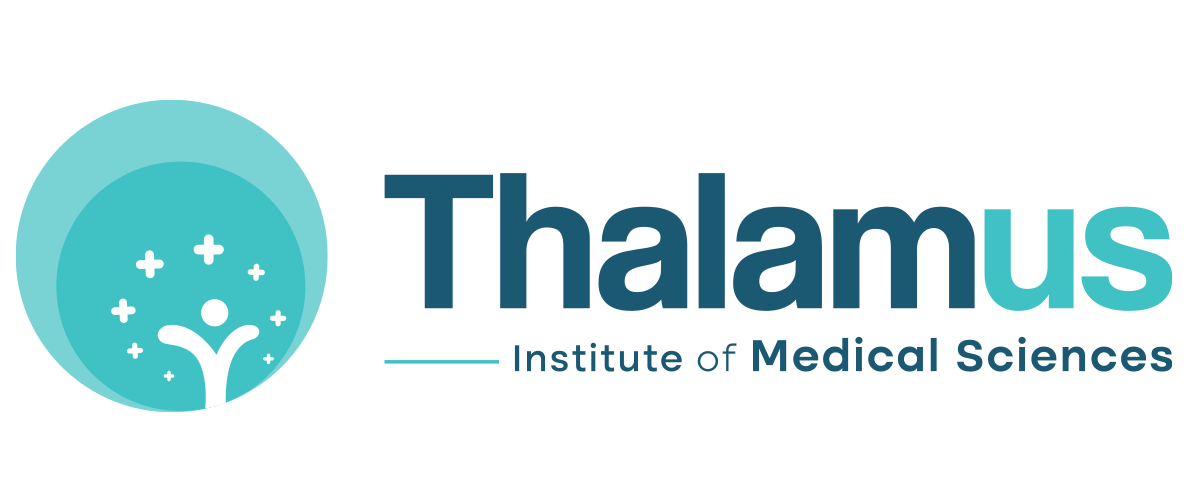blogs & News-> Blogs-> How to Spot & Stop Blood Clots After Surgery at the Best Orthopaedic Hospital in Siliguri-> Orthopaedic surgeries, whether it's a knee replace...

How to Spot & Stop Blood Clots After Surgery at the Best Orthopaedic Hospital in Siliguri
Category: Blog | Published By: Thalamus Institute of Medical Sciences | Created: 3 months ago
Orthopaedic surgeries, whether it's a knee replacement, a hip procedure, or spinal correction, can significantly improve mobility and quality of life. However, these transformative surgeries carry certain risks—one of the most serious being blood clots, particularly Deep Vein Thrombosis (DVT). At Thalamus Institute of Medical Sciences (TIMS), a leading name among the best orthopaedic hospitals in Siliguri, we believe that patient education is a powerful tool for recovery.
In this blog, we explain the causes of blood clots after orthopaedic surgery, how to spot DVT, and the most effective ways to prevent and treat it—so you or your loved one can recover safely and confidently under the care of the best orthopaedic hospitals in Siliguri.
What is Deep Vein Thrombosis (DVT)?
Deep Vein Thrombosis (DVT) is a condition where a blood clot forms in one of the deep veins, most commonly in the legs. This clot can partially or completely block blood flow. The danger increases if the clot travels to the lungs, leading to a pulmonary embolism (PE)—a potentially fatal condition. That’s why recognizing the signs early and following preventive care is critical.
Why Do Blood Clots Form After Orthopaedic Surgery?
Surgical procedures, especially orthopaedic surgeries involving the lower limbs, carry a higher risk of clot formation due to several factors:
1. Immobility
After surgery, patients often spend extended periods in bed. This lack of movement slows down blood circulation, especially in the legs, making it easier for clots to form. Early mobilization is one of the key strategies used by the best orthopaedic hospital in Siliguri to reduce this risk.
2. Surgical Trauma
Orthopaedic procedures can injure blood vessels during the surgical process. This trauma activates the body’s natural clotting system, which, while helpful in stopping bleeding, may result in unwanted clot formation.
3. Hypercoagulability
Surgery itself causes the blood to become more prone to clotting—a protective response that can sometimes go too far. Post-surgical hypercoagulability can increase the likelihood of DVT, especially if other risk factors are present.
4. Age and Existing Health Conditions
Older adults, people who are overweight, or those with a history of blood clots, heart disease, or diabetes are more vulnerable. At Thalamus Institute of Medical Sciences (TIMS), our best orthopaedic surgeons in Siliguri perform thorough pre-operative evaluations to understand and reduce these risks.
5. Prolonged Surgery Duration
Long surgeries mean prolonged inactivity. The longer a patient is under anaesthesia and immobile, the higher the chances of developing blood clots.
Symptoms of DVT:
Recognising the signs of DVT early can be lifesaving. Contact your doctor immediately if you observe the following:
- Swelling in one leg, especially in the calf or thigh
- Pain or tenderness, often resembling a muscle cramp
- Redness or warmth in the affected area
- Visible, bulging veins
Sometimes, DVT may present without noticeable symptoms, making preventive care even more vital.
How to Prevent Blood Clots After Orthopaedic Surgery
At Thalamus Institute of Medical Sciences (TIMS), we employ a multi-layered prevention plan to protect our patients. Here’s how we, as one of the best orthopaedic hospitals in Siliguri, help patients reduce their risk:
1. Medication (Anticoagulants)
Patients may be prescribed blood thinners like warfarin, heparin, or modern alternatives like rivaroxaban. These medications prevent clots by interfering with the body's natural clotting process. In low-risk cases, even aspirin may be advised.
2. Compression Devices and Stockings
- Intermittent Pneumatic Compression (IPC) devices gently squeeze the legs, simulating the pumping action of muscles to keep blood flowing.
- Compression stockings provide constant pressure to the legs, preventing blood from pooling.
3. Early Mobilization
As soon as it’s safe, patients are encouraged to start moving—even if it’s just gentle foot flexes or walking a few steps. This is one of the most effective ways to keep blood moving and prevent DVT.
4. Hydration
Staying well-hydrated helps keep the blood from becoming thick and sluggish. Adequate fluid intake should be part of every post-operative recovery plan.
5. Lifestyle Modifications
- Quit Smoking: Smoking damages blood vessels and promotes clot formation.
- Healthy Diet: Foods rich in omega-3 fatty acids, fruits, and vegetables support vascular health and improve circulation.
Treatment Options for Blood Clots at the Best Hospital in Siliguri
Even with all preventive steps, clots can still happen. Here’s how they are treated at Thalamus Institute of Medical Sciences (TIMS), widely recognised as the best orthopaedic hospitals in Siliguri:
1. Anticoagulant Therapy
The first line of defense includes blood thinners, which stop the clot from growing and help the body naturally dissolve it over time.
2. Thrombolytic Therapy
For life-threatening clots like pulmonary embolisms, clot-dissolving medications (like alteplase) are used. These are potent drugs administered in critical care settings.
3. Inferior Vena Cava (IVC) Filters
If anticoagulants can't be used, a filter is inserted into the vena cava vein to catch clots before they can travel to the lungs.
4. Compression Therapy
Ongoing use of compression stockings can reduce long-term complications like post-thrombotic syndrome, which causes chronic pain and swelling.
5. Surgical Intervention
In rare cases where other methods fail, a thrombectomy (surgical removal of the clot) might be necessary.
Long-Term Management and Recovery
Recovery from DVT is not a one-time event—it requires ongoing vigilance:
- Adhere to Medications: Never skip doses of prescribed anticoagulants.
- Stay Active: Regular physical activity, like walking or yoga, promotes circulation.
- Watch for Symptoms: Recurrence is possible; always monitor for warning signs.
- Compression Wear: Long-term use of compression stockings can prevent complications and improve comfort.
Final Thoughts
Preventing and treating blood clots after orthopaedic surgery is a critical aspect of post-operative care. At Thalamus Institute of Medical Sciences (TIMS) in Siliguri, we prioritise both surgical excellence and holistic recovery. Our team of the best orthopaedic surgeons in Siliguri works closely with patients to ensure a comprehensive recovery plan that includes clot prevention, early detection, and advanced treatment strategies.
Whether you're preparing for joint replacement or recovering from a fracture, trust Thalamus Institute of Medical Sciences (TIMS) — one of the best orthopaedic hospitals in Siliguri—to guide you safely through every stage of healing. Early intervention saves lives, and with the right approach, DVT is not just manageable—it’s preventable.
📞 Call us at: +91 03561-354100 | 9046005614
🌐 Visit us at: www.thalamushospital.com
Disclaimer: This blog is for educational purposes only and not a substitute for professional medical advice. If you experience any orthopaedic problems, please consult the best orthopaedic hospital in Siliguri. Avoid self-diagnosis or taking medications without medical guidance.
Book Doctor
Appointment






